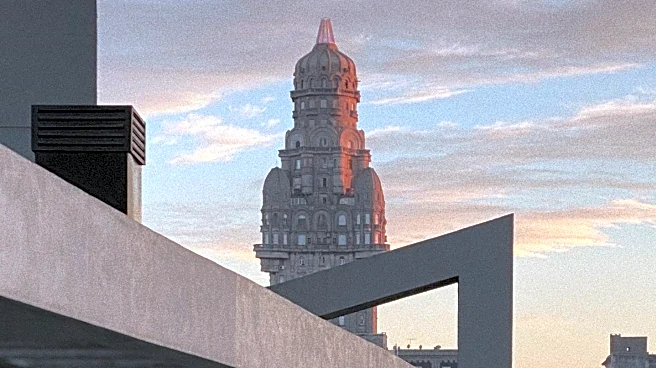What is the story about?
What's Happening?
Diane Keaton, renowned for her roles in films such as 'Annie Hall' and 'The Godfather,' was also a passionate advocate for preserving Los Angeles' architectural history. Keaton, who passed away at 79, dedicated nearly two decades to the Los Angeles Conservancy, working tirelessly to save historic and culturally significant buildings in the city. Her involvement began with an interest in historic homes, including one designed by Lloyd Wright, which she owned. Keaton's advocacy extended to high-profile campaigns, such as the effort to save the Ambassador Hotel, a landmark with a rich history, including hosting every U.S. president from Hoover to Nixon and being the site of Robert F. Kennedy's assassination. Despite her efforts, the hotel was demolished in 2005, but Keaton's commitment to preservation continued, influencing public policy and awareness around historic conservation.
Why It's Important?
Diane Keaton's work in historic preservation highlights the cultural and environmental significance of maintaining architectural heritage. Her advocacy brought attention to the importance of preserving buildings not only for their historical value but also for their potential future use, promoting sustainability in urban development. Keaton's influence helped shift public perception and policy towards valuing historic structures as integral parts of community identity and environmental conservation. Her efforts underscore the broader impact of celebrity involvement in social causes, demonstrating how public figures can leverage their influence to effect change in public policy and societal attitudes.
What's Next?
The legacy of Diane Keaton's preservation efforts may inspire continued advocacy for historic conservation in Los Angeles and beyond. Organizations like the Los Angeles Conservancy may build on her work to further integrate preservation into urban planning and development strategies. As awareness grows about the environmental benefits of reusing and adapting historic buildings, policymakers and developers might increasingly consider preservation as a viable option for sustainable development. Keaton's example could encourage other public figures to engage in similar advocacy, potentially leading to more robust preservation policies and practices.
Beyond the Headlines
Keaton's dedication to preservation also raises ethical questions about the balance between development and conservation. Her work prompts a reevaluation of how communities value their historical landmarks and the stories they tell. The cultural dimension of her advocacy highlights the role of architecture in shaping community identity and memory, suggesting that preserving buildings is not just about maintaining physical structures but also about safeguarding cultural narratives for future generations.
AI Generated Content
Do you find this article useful?














